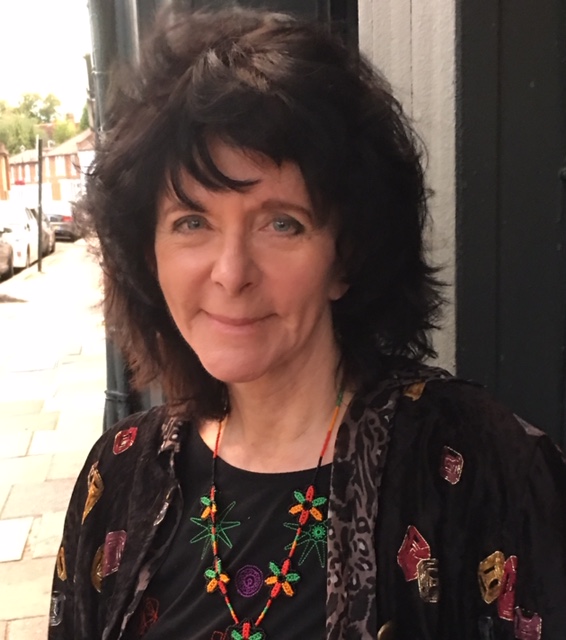
Ruth Padel
Bruegel’s Landscape with flight into Egypt
This is a talk Ruth gave at the Courtauld Gallery in September 2009.
Listen to the talk online at
http://www.guardian.co.uk/artanddesign/audioslideshow/2010/nov/09/ruth-padel-bruegel-courtauld
This is the text of her talk
*****
“Landscape with?” What are we supposed to be looking at, the story or its setting?
This landscape is a dialogue between blue-green and brown, darkest at the bottom with a red scatter in the right-hand shadow, from flowers like droplets of blood whose scarlet is almost unnoticeable, but echoed in Mary’s red robe, behind which is a dead tree whose top has dropped, forming a cross with the trunk. Landscape into narrative, the crucifixion foretold in a falling spruce.
The donkey has passed a pollarded tree hung with a shrine like a nesting box, the kind Bruegel painted as Catholic rural shrines in Haymaking. Out of this falls something else, an idol (in iconography of the Flight, paganism collapses as Christ goes past), and on one branch sits a sentinel black bird, marking the moment at which the Family comes out of one shadow and enters another.
Only one face is visible. Mary’s eyes are turned down; Joseph has his back to us, leading them into a chasm so dark it looks black. But something four-legged in there, a stag maybe, is looking up at them, and a white bird is flying through the dark.
It is a little theatre of barely noticeable falling and flight; a dialogue between mountain and water, visible and veiled, movement and stillness. The centre is a hidden baby, refugee from Herod’s baby-massacre and this is transition, the darkest part of their journey.
Behind them are two facing shores: past and future, the Holy Land and Egypt. In that mystic way in which New Testament shadows Old, the displaced family seeks asylum in the country from which Moses led his persecuted people. Both shores are light; the open water between them narrows to a V into which Mary’s figure rises as another V upside down.
It is hard to see in reproduction but both shores hold towns. The ones they’ve come from are blueish and blurred, as if underwater. The towns they’ll reach are sunlit and biscuit-coloured.
But the only people visible are three travellers around a cave, the left-hand shadow, so far away they are the same size as that black bird. Bruegel will make the parallel between bird and human soul more obvious in his 1565 Winter Landscape with Bird-Trap, where uncaught birds are the same size as people skating below. His landscapes are allegory as well as narrative: bird traps are bait for careless souls risking the slippery ice.
So what is a landscape? Greek tragedians displaced the moral pain of their day into myth. Bruegel explores his in two ways. In peasant allegories where landscape is absent, and in religious narrative moments. Where landscape matters as much as the characters.
Between 1562 when he painted Triumph of Death, and 1568 when the Netherlands finally rose against Spanish rule, he perfected landscape as a setting for suffering. This one from 1563 expresses his own experience of displacement. About 1552, age twenty seven, he went to Italy, where he did his earliest signed dated painting, Landscape with Christ and the Apostles at the Sea of Tiberias.
His earliest surviving works are drawings. This man from Low Countries produced drawings which connoisseurs call unparalleled in European art for mountain grandeur. Back in Antwerp, he began the peasant themes which gave him his nickname, “Peasant Bruegel”.
His mother in law came from the town of Mechelen whose artists suggested to him the moralizing, peasant themes by which he expressed obliquely the horrors of Reformation and Spanish occupation.
As Auden said, the 1562 Landscape with the Fall of Icarus is “about suffering”. Landscape is the place where important moments happen. A Procession to Calvary (1564). A moment on a donkey in the mountains. Ayslum-seeking.
